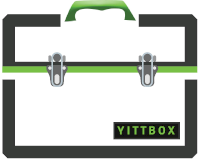How to Optimize Tableau Performance for Large Data Sets
Tableau is a powerful tool for visualizing data, but when working with large data sets, performance can sometimes become an issue. Slow dashboards and lagging queries can frustrate users and hinder decision-making. Fortunately, there are several strategies you can implement to optimize Tableau's performance when handling large volumes of data. In this blog, we'll explore best practices to ensure your Tableau workbooks run smoothly and efficiently, even with large data sets.
1. Optimize Data Sources
The first step to improving Tableau performance is optimizing your data sources:
- Filter Data at the Source: Wherever possible, limit the amount of data Tableau has to process by filtering data at the source. Use SQL queries, database views, or custom extracts to bring only the necessary data into Tableau.
- Use Extracts Instead of Live Connections: Extracting data into Tableau's native format can significantly boost performance, especially when dealing with large data sets. Extracts reduce the need for Tableau to query the database continuously, leading to faster load times.
- Aggregate Data: Aggregate your data to the appropriate level before importing it into Tableau. For example, if you only need monthly sales data, aggregate the data at the month level rather than the daily level.
- Reduce Dimensions and Measures: Remove unnecessary dimensions and measures from your data source. The fewer columns Tableau has to process, the better the performance.
2. Efficiently Design Dashboards
Your dashboard design can have a significant impact on performance:
- Limit the Number of Visualizations: Too many charts on a single dashboard can slow down performance. Aim for simplicity by limiting the number of visualizations and using only those that are necessary for your analysis.
- Avoid Complex Calculations: Complex calculations and highly nested formulas can slow down performance. Where possible, perform calculations in your data source or simplify them within Tableau.
- Optimize Filters: Filters can be resource-intensive, especially when applied to large data sets. Use context filters to reduce the number of data points Tableau needs to process and avoid using too many filters on a single dashboard.
- Minimize the Use of Quick Filters: Quick filters are convenient but can slow down performance. Limit their use, or replace them with parameters or filter actions, which are generally more efficient.
3. Utilize Performance Recorder and Analyzer
Tableau offers built-in tools to help you identify and address performance bottlenecks:
- Performance Recorder: Use Tableau’s Performance Recorder to track the performance of your workbook. It provides detailed insights into the time taken for various actions, helping you identify and optimize slow-performing areas.
- Performance Analyzer: The Performance Analyzer in Tableau Server and Tableau Online offers a more detailed breakdown of workbook performance, helping you pinpoint issues related to query times, rendering times, and more.
4. Optimize Calculations and Data Blending
When working with large data sets, it's essential to ensure that calculations and data blending are optimized:
- Use LOD Expressions Wisely: Level of Detail (LOD) expressions can be powerful but resource-intensive. Use them only when necessary, and consider whether simpler calculations can achieve the same result.
- Precompute Calculations: If you have complex calculations that don’t need to be dynamic, consider precomputing them in your data source or creating calculated fields in your extract.
- Optimize Data Blending: Data blending can slow down performance, particularly with large data sets. Where possible, use joins within the data source instead of blending data in Tableau.
5. Leverage Tableau Server and Tableau Online
For enterprise-level solutions, Tableau Server and Tableau Online offer additional options for optimizing performance:
- Distribute Workload: Use Tableau Server or Tableau Online to distribute the workload across multiple nodes, reducing the strain on individual users' machines.
- Cache Data: Enable caching on Tableau Server to speed up load times for frequently accessed dashboards.
- Use Backgrounder Processes: Offload resource-intensive tasks, such as data extracts and workbook renders, to backgrounder processes in Tableau Server, allowing for smoother user interactions.
6. Monitor and Tune Performance Regularly
Finally, ongoing monitoring and tuning are crucial for maintaining optimal performance:
- Regularly Review Performance: Periodically use Tableau’s Performance Recorder to monitor the performance of your dashboards and identify areas for improvement.
- Update Extracts Regularly: Refresh your extracts on a schedule that balances the need for up-to-date data with performance considerations. Stale extracts can be faster but less accurate, while frequent updates can slow performance.
- Stay Updated: Tableau regularly releases updates and performance enhancements. Keeping your software up to date ensures you benefit from the latest optimizations and features.
Conclusion: How to Optimize Tableau Performance for Large Data Sets
Optimizing Tableau performance for large data sets requires a combination of data source management, efficient dashboard design, and regular monitoring. By implementing these best practices, you can ensure that your Tableau workbooks run smoothly and provide fast, reliable insights, even when handling large volumes of data. Whether you're an analyst or a business leader, a well-optimized Tableau environment will empower you to make data-driven decisions with confidence.







